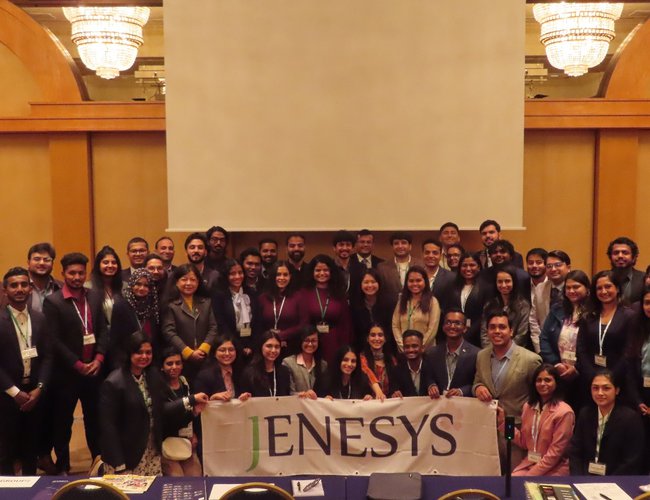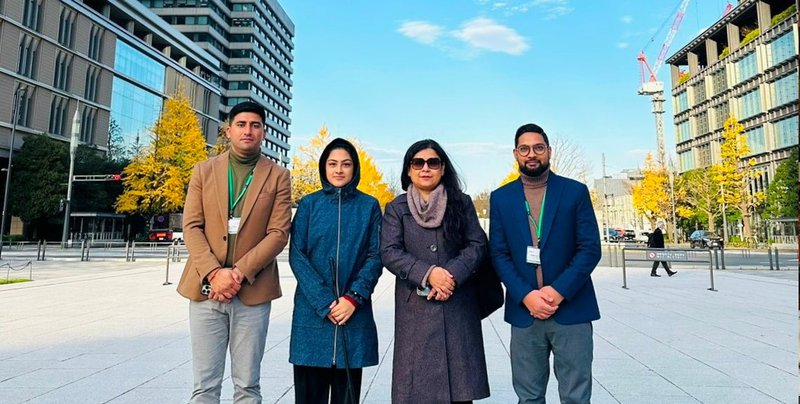

Nepalese students have been participating in Japan's education system and visiting the country for over 122 years. Japan remains an attractive destination for Nepalese students seeking higher education. Many Nepalese have already pursued higher education in Japan and are currently working in various sectors, contributing to Nepal's overall development with impressive impacts. Individuals who have studied in Japanese educational institutions are in leading positions in various fields such as medicine, engineering, science, public administration, agriculture, horticulture, and the economy. After visiting Japan through the JENESYS program, I realized the rational decision of my ancestors in choosing Japan for their careers.
Nepal has had a friendly relationship with Japan for centuries. Since Nepal and Japan established diplomatic relations in 1956, Japan has provided support to Nepal for its all-round development. Japan has implemented Official Development Assistance (ODA) programs in several sectors in Nepal to strengthen the alliance between the two countries. These programs have helped to foster human resources, transfer technology, and develop infrastructure through various technical cooperation projects.
The Japanese government, people, and diplomats working in Nepal have been very supportive of Nepal and its people in their efforts to transform the country. I am grateful for their support. I am inspired by the Japanese Ambassador to Nepal, Kikuta Yutaka, and his staff at the embassy for encouraging me in my writing and providing necessary support. I find the response I received from the Japanese Embassy regarding my work to be incredible. My visit to Japan under the JENESYS Program further strengthened my positive impression of Japan.
Participating JENESYS Program
The JENESYS Program is a part of Japan's Friendship Ties Program, which aims to connect people from different parts of the world. Recently, I participated in the JENESYS SAARC Program, which aimed to foster and strengthen ties and connections between Japan and the SAARC countries, including Bangladesh, India, Maldives, Nepal, Pakistan, and Sri Lanka.
There were 48 participants in total, divided into two groups with different activities. Group A focused on: Connectivity and Economic Cooperation were the themes of Group A and Group B, respectively.
Each group consisted of 24 members, with 8 participants from each country. I joined 7 other Nepalese participants on this journey. Although the thought of traveling with unknown members to a different country was exciting, it was also nerve-racking. Upon arriving at Narita airport, I was immediately reassured by the dedication and effort put in by JICE (Japan International Cooperation Center) for this event. Our names were on the tags, and we were smoothly guided to our hotel, where our room keys and food were ready for us. Meeting my roommate put me at ease as we had a lot in common despite our age gap. We were in different groups, A and B, so we didn't have much opportunity to communicate except when we were in the same room.
Everyone we interacted with during the program was respectful, friendly, and easy to talk to, including the member from Nepal. On the first day, despite political differences, participants from India, Nepal, and Pakistan socialized and found common interests between their nations.
During the program, we attended an informative session by JICA (Japan International Cooperation Agency) about their support for SAARC countries. This gave us insights into how Japan has been helping these nations. The lecture was given by MS. KOTAKE Yoko, South Asia Department Planning Division, JICA, and was both conspicuous and informative.
Afterward, we participated in a workshop where we brainstormed future projects for our countries as if we were JICA. We shared our ideas within our group and finally decided on one idea. It was interesting to see the creativity and ideas flowing.
We explored Akihabara, a busy city with well-managed crowds, and experienced the convenience of easy directions. The ride to Nagano on the Shinkansen was very pleasant. With pocket Wi-Fi access, I explored the train system, viewing stations and the train's current location. Time passed quickly, even faster than the Shinkansen. During the trip, I enjoyed a delicious traditional Japanese lunch called Shojin Ryori. It was fascinating to experience the differences in culture, even within Asia, as the food tasted nothing like our traditional dishes.
Our visit to Zenkoji Temple demonstrated the blending of different cultures. We learned about various beliefs, including the use of an incense burner to bring good health and fortune, the story of the cow, and the pitch-black tunnel (Key to Paradise) that runs under the altar and ensures eternal salvation.
During my meeting with Mr. Toshifumi Miyazawa, a prefectural council member in Nagano, and Toshiro Maruyama, the Mayor of Hakuba Village, I learned how to become a better community member. Hakuba Village, although cold, is filled with warm people. It became clear that our community can only progress if everyone feels the need to make it better and supports it, regardless of personal benefits. In addition, MIYAZAWA not only taught us but also demonstrated through the development of the Northern Alps how a community can prosper when resources are used wisely, and people care for their community.
His advice and claims were well supported by their thoughtful utilization of their limited arable lands, over 100 locally produced certified products, and more. He emphasized the importance of working with our geographical terrain, rather than against it. This is crucial advice that can benefit Nepal, a country with diverse topography. By simply observing the surroundings, one can see how much people value community and development.
Every day, I was amazed by Japan's creative and innovative approach to problem-solving. The Northern Alps Eco Park not only recycles PET bottles but also recycles the heat generated from the process. Proper protocols have been established to ensure the safety of the environment and people.
Staying with the local family was heartwarming. We connected over meals, family photos, and games despite language and cultural differences. The host family made every effort to bridge the communication gap.
Later in the program, we tried on Yukata and played with traditional Japanese toys. It was a memorable experience. The toys were simple yet challenging, making them entertaining.
At the end of the program, we had to present our final presentation to a large audience. I was one of the presenters in my group, and sharing our work was a highlight for me. We received valuable feedback, which helped me improve my presentation skills.
Overall, the JENESYS SAARC Program was an unforgettable experience of learning, friendship, and cultural exchange. It showed me the beauty and progress of Japan, and the kindness of its people. I have memories that I will treasure forever.
- NAGDHUNGA TUNNEL BREAKTHROUGH: Significant Milestone
- Apr 30, 2024
- Japanese Film Festival And Japan Day In Kathmandu
- Apr 09, 2024
- 78th Hiroshima Day: A Look Back
- Aug 08, 2023
- JDS : Japan’s Support To Nepal
- Jul 31, 2023
- Japan’s Support To Nepal: Uplifting The Economy
- Jun 29, 2023













